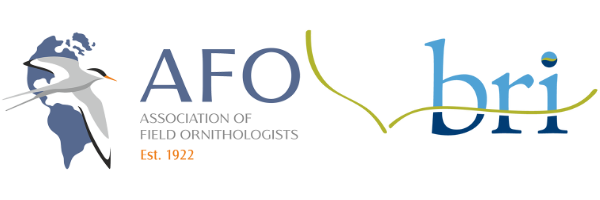Plastic color bands can be used as auxiliary markers to aid in identifying individual birds. Please refer to USGS Bird Banding Lab's info page if you need more information about the use of auxiliary markers.
We offer Darvic, Celluloid, and Acetal color bands to suit your research need. Darvic is the trade name for unplasticized PVC; bands made with this material are dyed with colorfast dyes and are UV-resistant. Celluloid bands are a thermoplastic band type that have limited availability, as much of the sheet material required to make the bands has become scarce. Acetal bands are a type of acetate band that are molded onto a small card or stick, off of which individual bands are removed for use.
Please note that we do not recommend using color bands on bats. If placed on their forearms, the edges of color bands can tear the wing membrane and cause injuries.
Regarding color bands (JUNE 2024). Avinet research Supplies is aware of the essential need for color bands in certain avian research studies. Avinet’s ability to provision color bands has long been a key service to the ornithological community. In recent years, we have experienced challenges in obtaining color bands of various colors, sizes, and plastic types. We have also encountered variation in quality and band specifications. As such, we have been working diligently with our supplier to communicate our needs and the specifications of the bands that researchers require for the success of their projects. We are also working to solve the larger, looming issue of limited color band availability to ensure that Avinet can support future needs of researchers. We encourage researchers to work carefully and creatively with the bands they currently have, and welcome communication that may aid in finding solutions to the long-term production challenges of color bands. Please contact us at orders@avinet.com with any suggestions or thoughts.
In the interim, we will be managing our supply of color bands to support the needs of researchers. In some cases, this may mean that orders of large orders of color bands may require partial fulfillment. While we do draw on available data to plan our supply purchases, we will also always welcome insight into the timelines and future needs of researchers. Please share this information with us, as it may help ensure that you can get what you need when you need it. We greatly value your work and take pride in our efforts to support research and conservation projects.
DISCLAIMER: Color bands are manufactured for application to captive and wild birds. However, as much as we may wish otherwise, they are not high-tech pieces of equipment. The coloration of color bands may fade or shift over time due to exposure to the climate and UV radiation. Color bands may open or lose shape if kept in hot conditions (such as a banding kit being left out in the sun or inside a vehicle). Color bands can also become brittle or crack if stored in plastic containers for long periods. While color bands are extremely useful, it's important for researchers to consider the limitations of this product.
What is the difference between celluloid and Darvic color bands?
The big advantage of celluloid bands is they can be sealed with acetone easily. They also hold their “memory” a bit better than Darvic.
Darvic is the trade name for unplasticized PVC, a UV-resistant plastic. It's also fade-resistant, and performs well in a variety of conditions.
Can I seal Darvic color bands?
Yes, Darvic bands can be sealed. The only way that Darvic bands can be sealed is by using heat to melt the plastic. One common method is to use a small soldering iron (please see this PDF article by Robert J. Meese, titled An Efficient and Effective Method for Sealing Darvic Color Bands. Used with permission.)
The other tool that we've tested for this purpose is a small thread-burner designed for use in crafting applications. It has a very fine-tipped battery-powered heating element that can be used to accurately melt Darvic bands. This tool is available here.
Suggested Sizing Chart
Below is a sizing chart that uses US band sizes to help you find the most appropriate product for your target bird. These are just suggestions, so if you're unsure of what will fit, it's best to purchase sticks of two different sizes and see what fits best. We also recommend asking a colleague for input. Generally, we suggest sizing up if you're unsure, but accuracy is important. You don't want a loose band falling over a metal band or a too-tight band causing irritation to the animal.
There are a few outliers that we've come across; for example, Red-cockaded woodpeckers get a size 1A (3.18mm) US band, and always have a size XB (4mm) color band. However, Grey catbirds wear the same size US band as RCWO, but can generally wear a size XCL (3.1mm) band.
| BBL Band Size |
Internal Diameter |
Corresponding Marker Size |
| 0A |
1.98mm |
XF = 2.3mm |
| 0 |
2.11mm |
| 1 |
2.39mm |
XCS = 2.8mm |
| 1B |
2.77mm |
| 1P (Snowy Plover) |
2.84mm |
XCL = 3.1mm |
| 1A |
3.18mm |
XCL = 3.1mm OR XB = 4mm |
| 1D |
3.5mm |
XB = 4mm |
| 2 |
3.96mm |
XB = 4mm or X3 = 4.5mm |
| 2A |
4.2mm |
X3 = 4.5mm |
| 3 |
4.78mm |
1FB = 5.5mm |
| 3B |
5.16mm |
1FB = 5.5mm |
| 3A |
5.56mm |
2FB=6.4mm |
| 4 |
6.35mm |
2FB=6.4mm or 3FB = 8mm |
| 4A |
7.14mm |
3FB = 8mm |
| 5 |
7.95mm |
3FB = 8mm |
| 5A |
8.74mm |
4FB = 9.5mm |
| 6 |
9.53mm |
4FB = 9.5mm or 5FB = 11mm |
| 7A |
11.13mm |
5FB=11mm or 6FB=12.7mm |
| 7 |
12.7mm |
6FB=12.7mm
|
| 7B |
13.49mm |
7FB=14mm |
| 7D |
15mm |
7FB=14mm |

